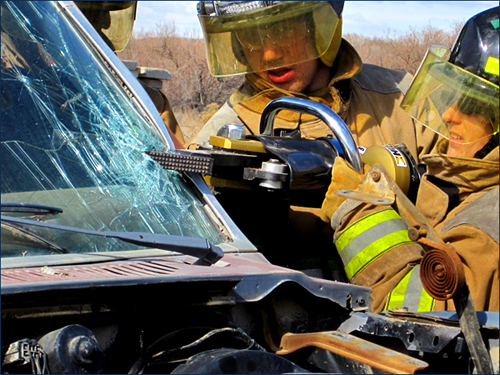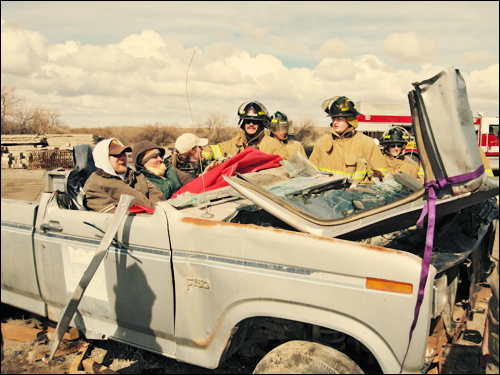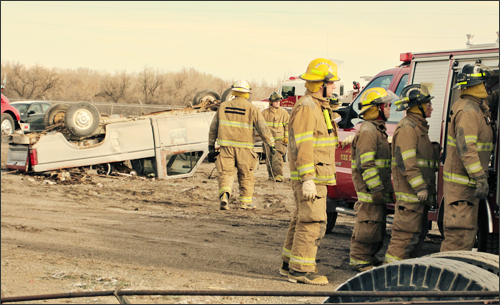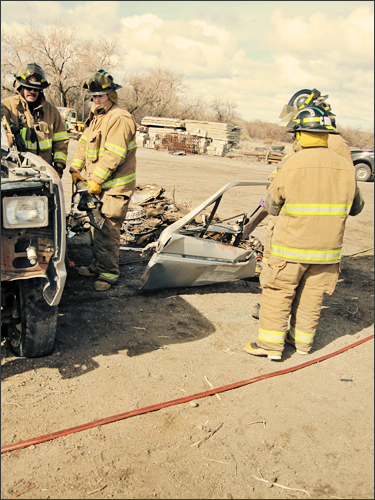This Is Only A Test
My EMT class convenes, early Saturday morning, at a wrecking yard. We are joined by the Fire Department dressed in bunker gear. We’re here to practice extrication: safely removing people from vehicles be they stable, mangled, or flipped (the vehicle, that is ~ we always assume the patient is mangled).
While the Fire Dept practices stabilizing automobiles, we practice moving patients out from various cars and trucks and onto a backboard. I play ‘patient’ at one point and am awed at how smoothly, thanks to proper knowledge and teamwork, I am transferred from wrecked truck to backboard to ambulance.
We join up with the Fire crew to learn about the fearsome tools they use to take apart a vehicle. We watch them in action.
Cutting the A-beams for roof removal:

The top of a truck is folded forward:

After a morning of practice in 30ºF weather with unrelenting 20-mph wind,
“Just like the real thing,” one instructor sadistically cackles, we are corralled in the ambulance as our instructors set up a crash: two vehicles, one on its side, with four moulaged patients trapped inside. Moulage: gory makeup that simulates all sorts of wounds and injury.
My classmates and I, and the Fire rookies, are then called to the scene to assess, extricate and transport these patients, while also tending to the additional patient care that takes place during each stage. The patient I am responsible for is in the backseat of a Bronco, the upright vehicle in the crash.
I have a fireman break the back window of the Bronco for me and I crawl in to manually stabilize my patient in the backseat. I discern his status, talk with him; sometimes, as he drifts out of consciousness, I simply talk to him. I stay with him while others cover us with a tarp, and then I hear all the windows being broken in quick succession. The glass patters against the tarp; gleaming bits bounce under the hem where I kneel. Once the windows are broken, firemen work to cut away the roof.
Forced into blindness to all that is going on beyond the tarp I am under, the world becomes momentarily muted, then punctured by din as massive tools held by those I cannot see snap through steel just inches away from my patient and I. Others, recognizable by voice, shout questions to me, instructions to each other.
A pool of fear spreads inside me as my range of sight shrinks. I cannot see the rookies, wielding their bone crushing tools; I cannot participate, or even prepare myself for what might go on beyond this blue cocoon. I give myself a mental shake, and let go of everything I cannot see and give myself to the one thing I can: the patient I am with.
It comes down to trust.
Sometimes, that is all we have.
I give my trust to those who move unseen on the other side of the tarp,
so that my patient might trust in me.










